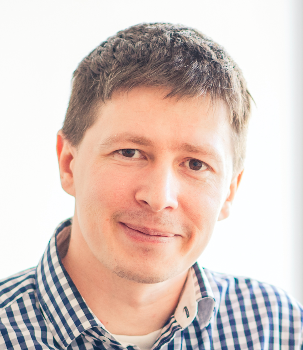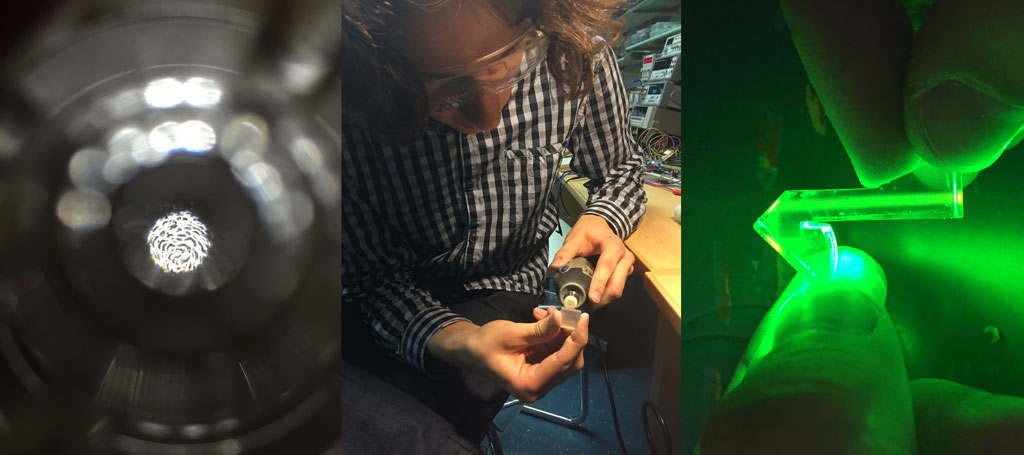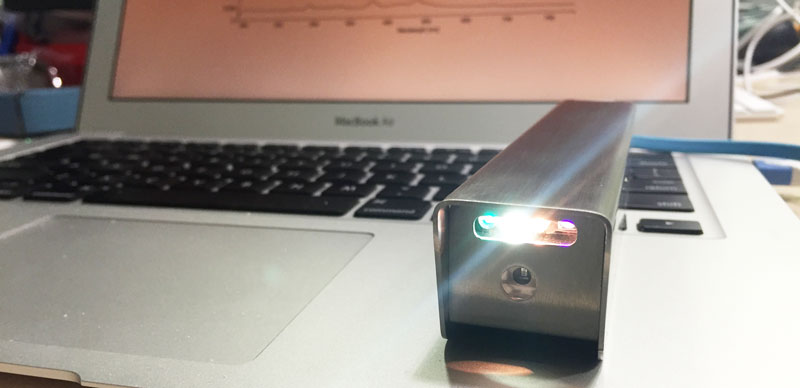Ways of Knowing: Materializing the Gaze
Now that we are constantly confronted with a superabundance of data and knowledge, we must look for alternative ways of learning and understanding. Artist and designer Wael El Allouche aims to develop a better understanding of phenomena on the basis of self-constructed ‘tangible data’. He asks if knowledge can be made tangible, if information has a material form, and how it relates to its own meaning.
Meet the artist: Waèl El Allouche

Waèl studied at the Maastricht Academy of Fine Arts and in the design department at the Gerrit Rietveld Academy in Amsterdam. He has completed internships in the studios of Vincent de Rijk and Rob Voerman, and was involved in Het Nieuwe Instituut’s ‘docubition’ about plastic in 2015.
Waèl is a young, aspiring Dutch artist with Tunisian origins. He kindly pointed me to the book “The Society of the Spectacle by Guy Debord” from 1967, which outlines, in detail, the complex fabric of humankind in today’s environment. Independently he argues, that one can not lose his or her roots, and needs to re-discover the potential and heritage of the forefathers in the daily struggle against all odds.
Thus, we had a series of interesting conversations on the philosophy of the social good, art, history and sociology in the context of self determination.
I think, that Wael’s good nature, humour and willingness to offer his familiarity even to strangers make him unique in the art world of his peers, who hide behind technology and social media. Wael does not hide his struggles and pains, because he is defined by them. Maybe he did not discover the strength of human suffering to boost and aim the concert of his tools and talents. However, he always smiles, he always shares, and he is always empathetic to all humankind. Such a rare personality and joy to be around him, and create!
https://www.waelelallouche.com/projects/orientalising-science
Piet Mondrian and his abstract cubic forms
The initial inspiration of Wael was to create an instrument that could capture individual light particles from the place of observation. With the capture of light, he would then create a dataset, which ought to be materialized. Similar to making a data - statue, or sculpting the light caught by the camera obscura. The art and form was inspired by the works of Piet Mondrian.
Mondriaan was a Dutch painter and theoretician who is regarded as one of the greatest artists of the 20th century.[wiki] He is known for being one of the pioneers of 20th-century abstract art, as he changed his artistic direction from figurative painting to an increasingly abstract style, until he reached a point where his artistic vocabulary was reduced to simple geometric elements.

Mondrian’s art was highly utopian and was concerned with a search for universal values and aesthetics. He proclaimed in 1914: ==“Art is higher than reality and has no direct relation to reality. To approach the spiritual in art, one will make as little use as possible of reality, because reality is opposed to the spiritual. We find ourselves in the presence of an abstract art. Art should be above reality, otherwise it would have no value for man."== His art, however, always remained rooted in nature.

He was a contributor to the De Stijl art movement and group, which he co-founded with Theo van Doesburg. He evolved a non-representational form which he termed Neoplasticism. This was the new ‘pure plastic art’ which he believed was necessary in order to create ‘universal beauty’. To express this, Mondrian eventually decided to limit his formal vocabulary to the three primary colors] (red, blue and yellow), the three primary values (black, white and gray) and the two primary directions (horizontal and vertical)
Camera obscura, Hasan Ibn al-Haytham and his “Opticks” (975 – 1000 AD).
Wael kindly explained, to my large surprise, that Newton and his Opticks from 1700 was not the first scientific treatise on the nature of light. The works of “Alhazen” predated Newton by seven centuries, almost a millenium! Ḥasan Ibn al-Haytham or just Ibn al-Haytham was the first to explain that vision occurs when light reflects from an object and then passes to one’s eyes. He was also the first to demonstrate that vision occurs in the brain, rather than in the eyes. Building upon a naturalistic, empirical method pioneered by Aristotle in ancient Greece, Ibn al-Haytham was an early proponent of the concept that a hypothesis must be supported by experiments based on confirmable procedures or mathematical evidence—an early pioneer in the scientific method five centuries before Renaissance scientists.
The Arab World Institute is an organization founded in Paris in 1980 by eighteen Arab countries with France to research and disseminate information about the Arab world and its cultural and spiritual values. The Institute was established as a result of a perceived lack of representation for the Arab world in France, and seeks to provide a secular location for the promotion of Arab civilization, art, knowledge, and aesthetics. [wiki]

The hyperspectral scanner based on Mondrian reprap and myspectral Lumini T spectrometer
A digital camera sensor can snap usually three images at once for each red, blue and green color. The resulting image has the width x height resolution in pixels and contains three color channels. Because human eyes contain usually three types of color receptors, our brain interprets the images in “full color”.
People with only two color receptors, cones, only see the color in a “black and white” mode, unable to distinguish certain colors such as green and red.
On the other hand, a very small percentage of women have four cones as color receptors: red, blue, green and an additional pink/orange type. They are called “tetrachromats”. If we draw each color of the R G B color space in a cube, then fourth cone adds one more dimension. Thus, going from two color cones, a two-dimensional space, to three cones a three dimensional cube, to four cones, a four dimensional hypercube is something we, mere mortals, can hardly imagine.
How do we imagine colors in four dimensions? How do we even draw the pictures? Are there cameras to capture four dimensional color images? What if we add the fifth, sixth or thirtieth color dimension? There are practical, philosophical and biological limits to what a regular human can perceive.
Multispectral sensors usually have between 3 and 10 different band measurements in each pixel of the images they produce. Hyperspectral sensors measure energy in narrower and more numerous bands than multispectral sensors. Hyperspectral images can contain as many as 200 (or more) contiguous spectral bands. The numerous narrow bands of hyperspectral sensors provide a continuous spectral measurement across the entire electromagnetic spectrum and therefore are more sensitive to subtle variations in reflected energy. Images produced from hyperspectral sensors contain much more data than images from multispectral sensors and have a greater potential to detect differences among land and water features.

Wael has proposed using the Mondrian Reprap 3D printing kit as a basis for the hyperspectral scanner. The hyperspectral scanner would have a myspectral Lumini T spectrometer attached, instead of the printing head.
The software was implemented in OpenCV, python, and the data visualization in Qt console. You can see the scanner in action with the live running software
A hyperspectral scanner is perfectly suitable for scanning static scenes, such as paintings, drawings or interiors. Due to the length of the scanning process, it is not well suited for dynamic, moving object scanning in hundreds of colors. The result of the scan is a hypercube in raw data format and a pointcloud in .xyz format.
You can download a processed, colorized spectrum of a scene as a pointcloud .xyz + color here. This is a 40 pixel wide x 40 pixel high x 256 colors pointcloud with the following false color image:

-pointcloud.png)
Bratislava Design Week exhibition was held in June 2019 and provided opportunity for public discussion on the topics of artscience and the exchange of thoughts, cultures, domains of knowing across borders and human minds. http://www.bratislavadesignweek.sk/open-call-wael-el-allouche-a-andrej-mosat/




